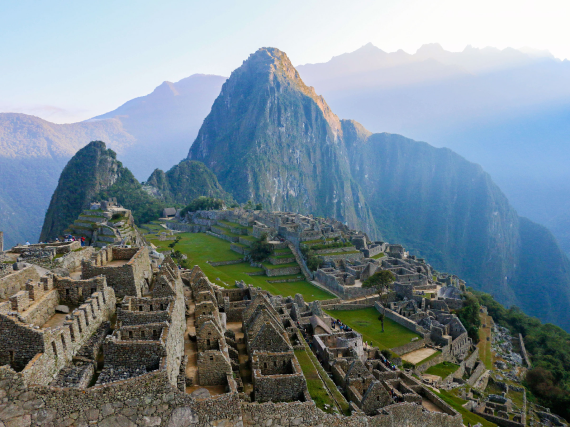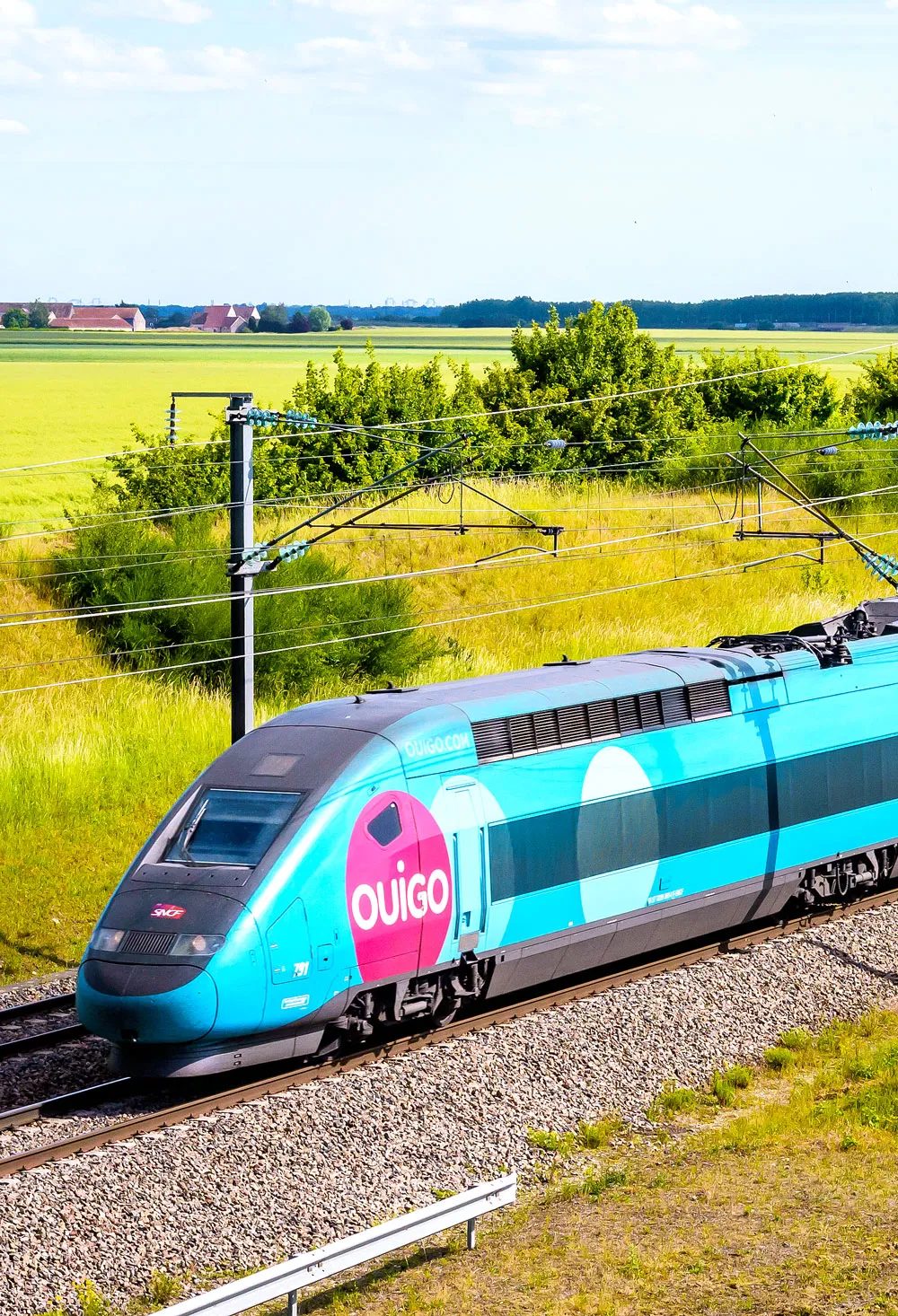France’s high-speed rail network is among the most advanced systems of its kind in Europe. It carries more than 122 million annual passengers across the nation at lightning-quick speeds, providing a convenient and comfortable way to travel between major cities. Better yet: The country plans to unveil a new, state-of-the-art fleet of ultrafast trains in 2026. Here’s what travelers can expect when France’s high-speed trains undergo a major glow-up next year.
The State of High-Speed Trains in France
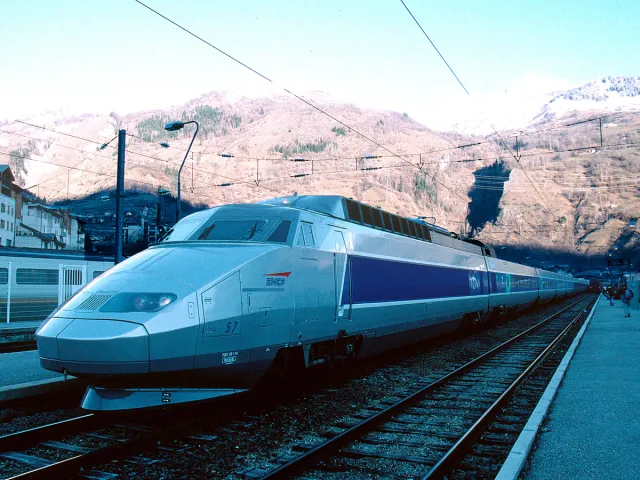
First, you might be wondering how France’s impressive high-speed rail network came to exist. The Société Nationale des Chemins de Fer Français (SNCF) is the state-owned railway company of France. In 1966, the SCNF began developing a high-speed train line called Trains à Grande Vitesse (TGV), which translates to “high-speed trains” in English.
The TGV entered service from Paris to Lyon on September 22, 1981. The new high-speed service completed the 250-mile journey in just two hours — half the time that it previously took. Throughout the 1980s and 1990s, TGV ridership grew by around 70%, with trains reaching peak speeds of 236 mph. The service expanded to include connections to neighboring countries such as Germany, Spain, Italy, Belgium, and Luxembourg. And in 1994, the Eurostar opened high-speed train service between France and the United Kingdom for the first time.
Today, there are around 230 high-speed rail stations located throughout France and neighboring countries, with approximately 400 high-speed trains in active service. Riders can depart the capital of Paris and make it to, say, Marseille, on the Mediterranean coast, in only three hours and two minutes.
French TGV trains are also known for setting records: On April 3, 2007, the nation’s LGV Est model hit speeds of 357.2 miles per hour, setting a world speed record for a wheeled passenger train on steel rails.
A High-Speed Makeover
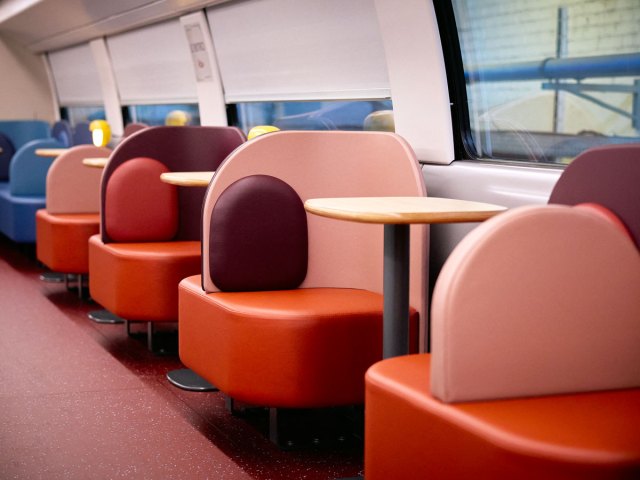
In 2017, France unveiled a new model and brand name for their high-speed trains: TGV inOui, a play on the French word inouï, meaning “extraordinary.” SNCF executive Rachel Picard said of the introduction that the goal of the TGV inOui line was to provide “a new customer experience with more comfort, more services, and more connection, at the same price.”
Now, less than a decade after the line’s debut, the SNCF is set to roll out a fifth-generation model of the TGV inOui in 2026. These new trains boast a gorgeous, high-tech design. A team of 2,000 designers worked to craft the cars from scratch, taking into account factors such as comfort, practicality, accessibility, and eco-efficiency.
These new trains will be made from 97% recyclable materials and have the lowest carbon footprint of any train of their kind. The trains aim to reduce CO2 emissions by 50% compared to earlier models.
The trains also will increase the number of individual coaches from eight to nine, boosting the total capacity by 20% to up to 740 seats per train. They’re designed with accessibility in mind — for the first time ever, passengers who require wheelchairs will be able to easily and independently access a dedicated autonomous car via an integrated lifting platform.
Designers tested 125 different body types to ensure maximum comfort with the foam used in the seats, and trains will be fully outfitted with Wi-Fi. Additionally, the café car will be renovated to feature two separate stories: The bottom floor will serve as a self-service grocery, while the top floor will be a bistro section with booths where riders can enjoy their meals. Bathrooms on the train have also been enlarged, and will now feature frosted windows to let in natural light.
The train’s decor, too, is striking. In renderings, cars are decorated with a soft color palette featuring red, blue, and yellow hues. Combined with the many rounded shapes, it gives the trains a jointly futuristic and retro vibe. The design was a combined effort from French engineering consultancy AREP and Japanese design firm NENDO. “The idea was to take a fresh look, to introduce a lasting break in the railway world and to re-enchant a technical and industrial environment,” the SNCF said in a statement.
Wondering when you’ll be able to ride these new trains? Luckily, we won’t have to wait long — they are set to hit the rails on the Paris-Lyon-Marseille line in 2026 and will roll out on additional lines thereafter.
What To Know About High-Speed Rail in France
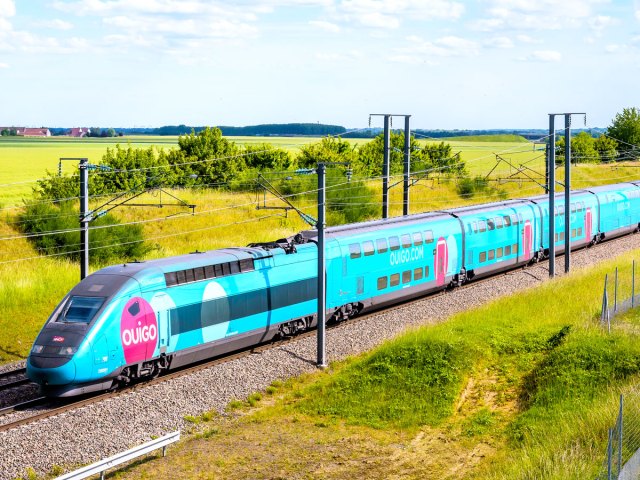
When booking a TGV inOui ticket, you can choose between first or second class, both of which are exchangeable or refundable under certain conditions until the time of departure. Prices start around €15 ($18 USD) for domestic travel, but according to travel expert Rick Steves, as seats sell out closer to the departure date, prices increase (similar to airline fares), so it’s best to make a reservation sooner rather than later. Tickets are available for booking three to four months in advance.
It’s also worth noting that there are certain luggage restrictions on TGV inOui trains. You can bring either two suitcases and one small item — or one suitcase, one small item, and one special item (e.g., a musical instrument, folding bike, etc.). Check here for further information about luggage, along with answers to other commonly asked questions.
In addition to the TGV inOui line, SNCF offers a more affordable alternative: TGV OUIGO. This high-speed rail travels at up to 186 mph. There are two types of fares. The first is a basic option starting at just €10 ($11.50) for adults and €5 for children under 11. But for €9 more, you can upgrade to a fare that comes with seat selection, Wi-Fi, and a skip-the-line service. The trains service around 50 destinations throughout France.
More from our network
Daily Passport is part of Inbox Studio, which publishes content that uplifts, informs, and inspires.

